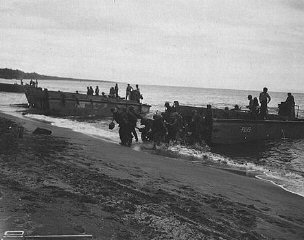ฝาแฝดอิน-จัน เกิดเมื่อวันที่ 11 พฤษภาคม พ.ศ. 2354 ตรงกับรัชสมัยรัชกาลที่ 2 ในครอบครัวคนไทยเชื้อสายจีน ที่จังหวัดสมุทรสงคราม โดยมีบิดาเป็นชาวจีนอพยพแต่ครั้งรัชกาลที่ 1 ชื่อ นายที มารดาเป็นคนไทยชื่อ นางนาก (บันทึกของชาวตะวันตกเรียกว่า นก (Nok)) ซึ่งฝาแฝดคู่นี้สามารถเติบโตและใช้ชีวิตได้เหมือนคนปกติ แตกต่างไปจากแฝดติดกันคู่อื่น ๆ ที่มักเสียชีวิตหลังคลอดได้ไม่นาน
ตามกฎหมายในเวลานั้น ทั้งคู่ต้องถูกประหารชีวิตเนื่องจากความเชื่อที่ว่าเป็นตัวกาลกิณี แต่เมื่อเวลาผ่านไปก็หาได้มีเหตุการณ์ใด ๆ ตามความเชื่อไม่ โทษนั้นจึงได้รับการยกเลิก
เมื่อทั้งคู่อายุได้แค่ 2 ขวบ บิดาก็เสียชีวิตลงด้วยอหิวาตกโรค ภาระจึงตกอยู่ที่มารดาแต่เพียงผู้เดียว แฝดทั้งคู่จึงช่วยเหลือมารดาเท่าที่เด็กในวัยเดียวกันจะทำได้ เช่น จับปลา ขายน้ำมันมะพร้าว และทำไข่เค็มขาย จนในปี พ.ศ. 2367 ความพิเศษของเด็กทั้งคู่ทราบไปถึงพระกรรณของพระบาทสมเด็จพระนั่งเกล้าเจ้าอยู่หัวจึงพระราชทานพระบรมราชวโรกาสให้นางนากและอิน-จันเข้าเฝ้าทูลละอองธุลีพระบาท แล้วในปี พ.ศ. 2370 ก็มีพระบรมราชานุญาตให้อิน-จันได้เดินทางร่วมไปกับคณะทูตเพื่อเจริญสัมพันธไมตรีกับประเทศโคชินไชน่า (เวียดนามในปัจจุบัน)
ในปี พ.ศ. 2367 นายโรเบิร์ต ฮันเตอร์ พ่อค้าชาวอังกฤษ หรือที่คนไทยสมัยนั้นเรียกว่า "นายหันแตร" ได้นั่งเรือผ่านแม่น้ำแม่กลอง และได้พบแฝดคู่นี้กำลังว่ายน้ำเล่นอยู่ ด้วยความประหลาดและน่าสนใจ นายฮันเตอร์จึงคิดที่จะนำฝาแฝดคู่นี้ไปแสดงโชว์ตัวที่สหรัฐอเมริกา จึงเข้าทำความสนิทสนมกับครอบครัวของฝาแฝดอยู่นานนับปี จนพ่อแม่ของทั้งคู่ไว้วางใจ ในที่สุดนายอาเบล คอฟฟิน กัปตันเรือสินค้า เดอะ ชาเคม (The Sachem) ซึ่งขณะนั้นได้เข้ามาทำการค้าในประเทศไทย ก็เป็นผู้นำตัวคู่แฝดออกเดินทางจากประเทศไทยเมื่อวันที่ 1 เมษายน พ.ศ. 2372 ขณะนั้นอิน-จัน อายุได้ 18 ปี โดยใช้เวลาเดินทางทั้งหมด 138 วัน จึงถึงเมืองบอสตัน รัฐแมสซาชูเซตส์ และที่นี่เองที่คู่แฝดได้ทำการเปิดตัว ก่อนจะออกเดินทางแสดงทั่วอเมริกาและยุโรปอีกร่วม 10 ปี (เอกสารบางฉบับบอกว่า ไม่ได้เริ่มที่บอสตัน แต่ไปตั้งหลักที่รัฐแคลิฟอร์เนีย) โดยสัญญาที่ทำไว้กับนายฮันเตอร์และนายคอฟฟินสิ้นสุดลงเมื่อทั้งคู่มีอายุครบ 20 ปีบริบูรณ์ โดยในช่วง 2 ปีแรก ทั้งคู่ก็ได้รับส่วนแบ่งค่าตอบแทน แต่ก็มีบางครั้งก็ถูกเอาเปรียบด้วย เมื่อเป็นอิสระทั้งคู่ก็เปิดการแสดงเอง และได้แสดงไปทั่วสหรัฐอเมริกา
จนเมื่ออายุได้ 28 ปี ใน พ.ศ. 2382 ทั้งคู่ก็ได้ลงหลักปักฐานที่หมู่บ้านแทรปฮิลล์ (Traphill) เขตชานเมืองวิลส์โบโร (Wilkesboro) เคาน์ตีวิลส์ ในรัฐนอร์ทแคโรไลนา พร้อมกับได้เปลี่ยนชื่อและเปลี่ยนสัญชาติเป็นอเมริกัน โดยมีชื่อว่า เอ็ง-ชาง บังเกอร์ (Eng and Chang Bunker) พร้อมกับได้แต่งงานกับหญิงชาวอเมริกัน และมีลูกด้วยกันหลายคน ซึ่งระหว่างที่ทั้งคู่ใช้ชีวิตในต่างประเทศนั้น มีความพยายามหลายครั้งจากหลายบุคคลที่จะทำการผ่าตัดแยกร่างทั้งคู่ออกจากกัน แต่ท้ายที่สุดก็มิได้มีการดำเนินการจริง ๆ
จากบันทึกที่ได้บันทึกไว้ ระบุว่า จัน (คนน้อง) เป็นคนที่มีอารมณ์ร้อน หุนหันพลันแล่น และชอบดื่มสุราจนเมามาย ขณะที่ อิน (ผู้พี่) กลับมีนิสัยตรงกันข้าม คือ ใจเย็น สุขุมกว่า และไม่ทานเหล้า อีกทั้งทั้งคู่เคยทะเลาะวิวาทจนถึงขั้นชกต่อยกันเองมาแล้วด้วย
จากการที่จันผู้น้องนิยมดื่มเหล้าจนเมามายบ่อย ๆ ทำให้เป็นโรคหลายโรค จนในวันที่ 17 มกราคม พ.ศ. 2417 จันก็เสียชีวิตลงด้วยอาการหัวใจวาย จากนั้นอีกราว 2 ชั่วโมงถัดมา อินก็ได้เสียชีวิตตามไปด้วย ซึ่งจากการชันสูตรและลงความเห็นของแพทย์สมัยใหม่ ระบุว่า อินต้องสูญเสียเม็ดเลือดแดงให้แก่จันที่เสียชีวิตไปแล้ว ผ่านทางเนื้อที่เชื่อมกันที่อก ทั้งคู่เสียชีวิตขณะที่มีอายุได้ 63 ปี
